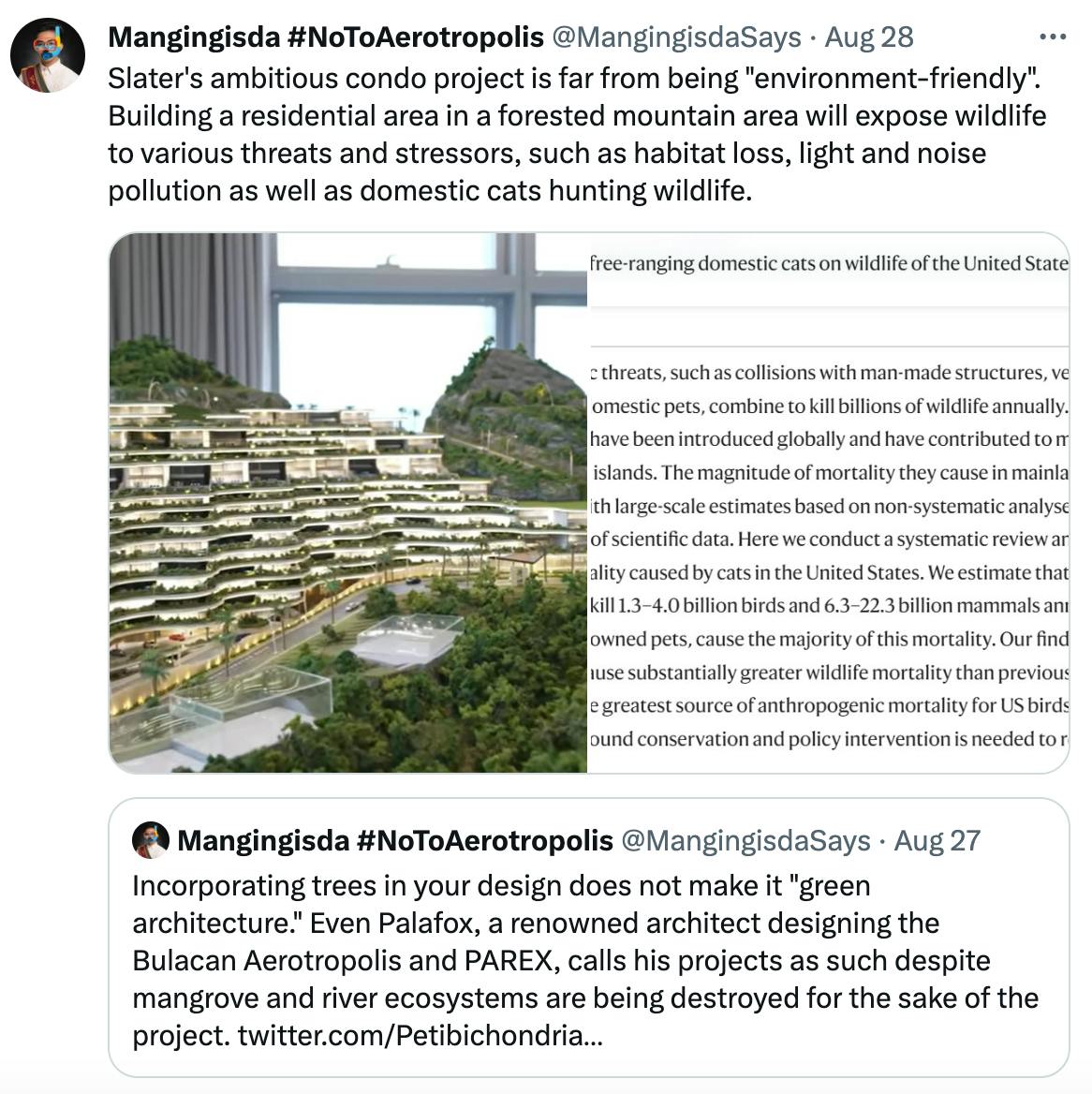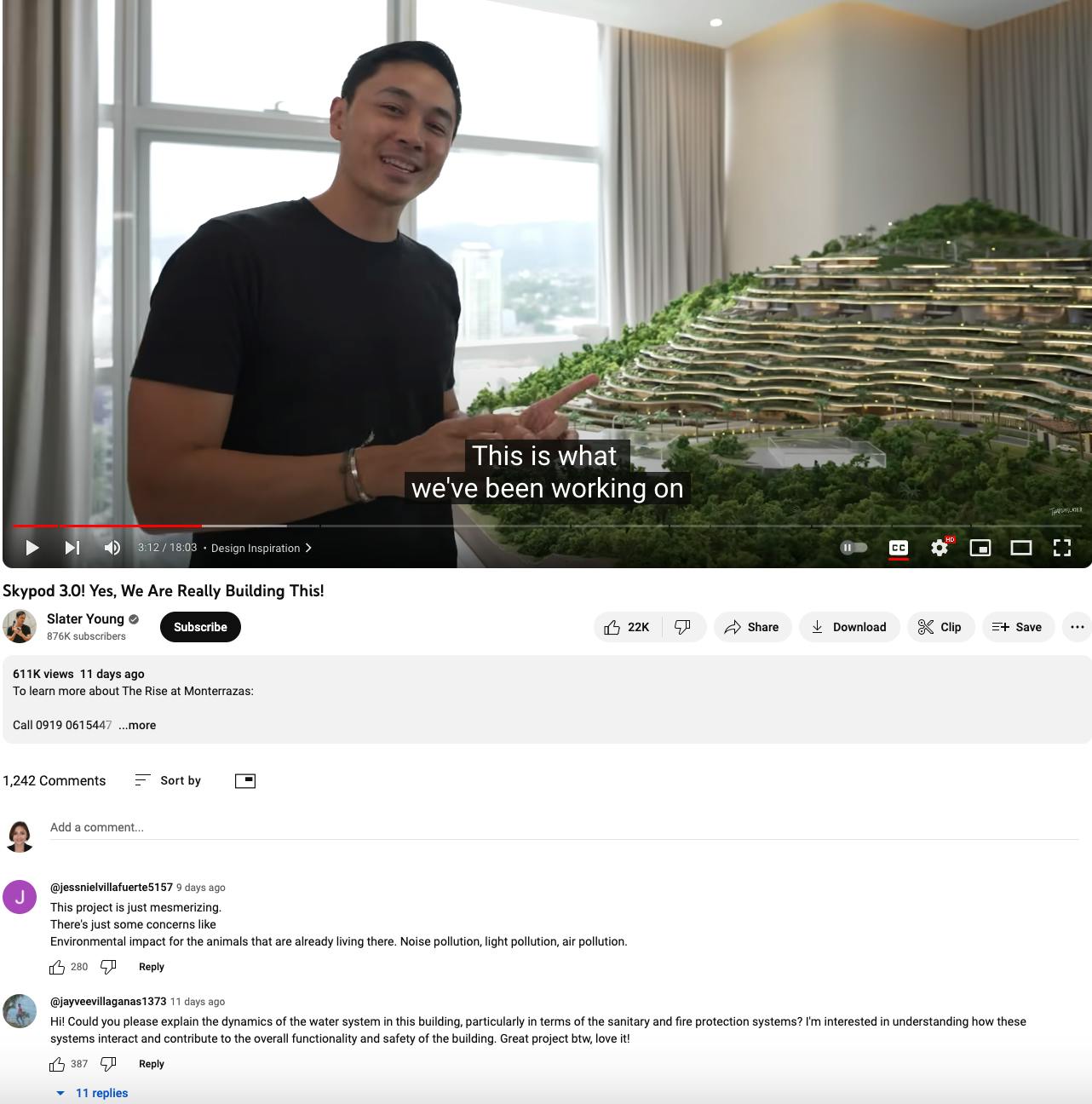A Cebu real estate project dubbed as sustainable may face environmental risks if it pushes through without mitigation measures, say urban planners.
To continue reading, subscribe to Eco‑Business.
There's something for everyone. We offer a range of subscription plans.
- Access our stories and receive our Insights Weekly newsletter with the free EB Member plan.
- Unlock unlimited access to our content and archive with EB Circle.
- Publish your content with EB Premium.
Filipino civil engineer and content creator Slater Young unveiled plans on his YouTube channel on 24 August for a new luxury condominium called “The Rise at Monterrazas” located along Monterrazas de Cebu, Guadalupe, Cebu City, the second largest metropolitan area in the country. Young is the designated brand ambassador of project owner 8990 Housing Development Corporation.
The units will be built on a mountain ridge overlooking the city, inspired by the Banaue Rice Terraces, a UNESCO World Heritage Site in the Philippines. The development drew mixed reactions in social media over the possible environmental impact of the design.
Yumi Espina, officer-in-charge of Cebu’s planning and development office (CPDO), echoed the public’s concern, citing how the project’s location may have been approved by the zoning board, but it still needs an environmental clearance certificate from the department of environment and natural resources (DENR).
The zoning board encompasses the CPDO whose task is to prepare plans for the social, economic, environment, physical, and institutional development of the city.
“Landslides and flooding in the lower areas of the building may be possible during construction unless specific mitigating measures are conducted,” Espina told Eco-Business.
“If indeed, during construction, there will be landslides and erosion, the developer should institute mitigating measures such as detention ponds at the lower portion still inside their property to protect the main road and the outlying residential areas below.”
The developer came up with the terraced proposal because their initial plan was a multi-storey building which was rejected by the zoning board since the city ordinance prohibits tall structures in the area, said Espina, also the former dean of Cebu-based University of Carlos school of architecture and fine arts.
He added: “The new design is considered less dense as it is spread out over a larger footprint. The developer introduced green areas in between the terraces to achieve lower densities. However, there are environmental risks involved especially during construction as earth-moving will have to be conducted. The required environmental clearance certificate will have to specify the procedures during construction.”
“
The rice terraces’ use of sloping land is compatible with surrounding uses such as secondary forests, crop lands and low-density settlements, while a residential development of 200 hectares of supposedly non-buildable sloping land is not.
Conchita M Ragragio, fellow, Philippine Institute of Environmental Planners
Conchita M Ragragio, a fellow of the Philippine Institute of Environmental Planners, said steep slopes exceeding an inclination of 15 per cent are better forested or reforested rather than built on. Vegetation, instead of concrete structures and pavements, will absorb rainwater, store it in aquifers and gradually release it into springs or streams, to curb flooding.
“To have the Banaue Rice Terraces as a design inspiration is perhaps laudable, as they [the rice terraces] are definitely in harmony with nature. But the rice terraces’ use of sloping land is compatible with surrounding uses such as secondary forests, crop lands and low-density settlements, while a residential development of 200 hectares of supposedly non-buildable sloping land is not,” said Ragragio.
8990 Housing Development Corporation had not responded to Eco-Business’ request for comment at the time of publishing.
Monterrazas de Cebu: a history of flooding
The Monterrazas de Cebu housing project was first blamed by residents in April 2008 for a landslide that affected at least 10 families in the barangay (village) of Guadalupe, the most populous dsitrict in Cebu. It resulted in the project’s permit to be revoked. The property was then owned by Landco Pacific Corporation.
The construction works along the site’s jurisdiction were found to involve bulldozing of land and cutting of trees, causing gradual soil deterioration in the nearby upland areas.
The permit was reinstated the following year, with the condition that more retention ponds be built to prevent runoff water from flooding residential areas below.
But in 2011, the government asked the new owner Genvi Development Corp to halt construction at the same site after yet another flooding incident.
In 2019, 8990 Housing Development Corporation acquired the entire site from Genvi, in a bid to enter the high-end property market for the first time.
The initial project plan without the terraced proposal, was granted an environmental clearance certificate in 2007, by Allan Arranguez, then the office-in-charge regional director for the DENR Central Visayas office.
The environmental impact assessment and review were conducted by engineers William Cuñado and Armando Malicse, respectively.
Cuñado is the former director of the Environmental Management Bureau of the DENR who was also responsible for the issuance of environmental compliance certificates for reclamation projects in Manila Bay that have been slammed by activists for their potential to cause massive flooding in southern Metro Manila.
Want more Philippines ESG and sustainability news and views? Subscribe to our Eco-Business Philippines newsletter here.












